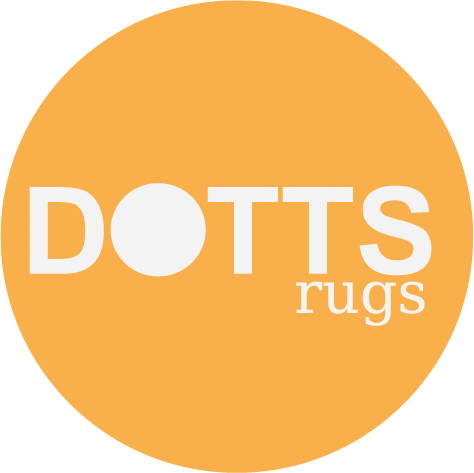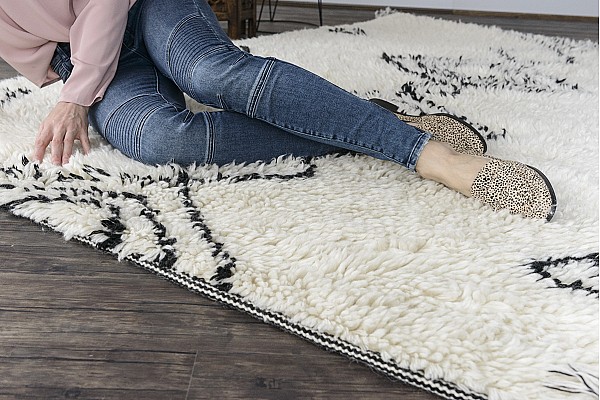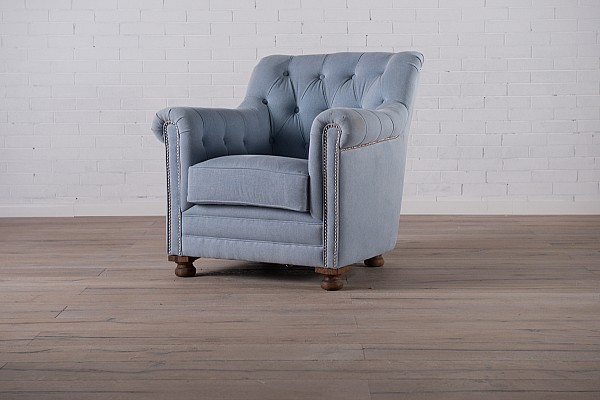Care & Maintenance
Care & Maintainance
Keep rugs dry and out of dark places.
To ensure even wear and minimise the natural fading that occurs from sunlight, rotate your rug end-to-end. Avoid areas with direct sun light or heat.
Vacuum regularly. We do not recommend using rotating or brush head vacuum cleaner. Only vacuum along the the fibers, not across it. From time to time, turn your rug upside down and vacuum the back.
Treating spills.
Carefully scrape up as much of the spill as possible with a spoon or dustpan and blot any liquid residue with kitchen paper towel or other colourfast absorbent material. Do not rub. Cover the spill with absorbent material , add weight o top if needed. Leave for 10 minutes for the liquid to absorb. Water based spills are best treated with luke-warm water. Oil based spills are best treated with mild detergent diluted in luke-warm water. Highly-coloured products, such as paint, nail polish, shoe polish, lipstick and glue, will not respond to these simple treatments. Please seek professional cleaning services.
Do not drag furniture over the rug as it may pull on the loop and damage the rug.
Never pull on loose loop or fibre. Gentry tuck it back into a weft or if a rug has a backing glued to the back of the rug carefully cut loose thread to the height of the rug's pile.
General Information
Hand made rugs
Our hand made rugs are carefully created by skillfull craftsmen. Each rug can take up to 6 months of scrupulous work. Due to innate inconsistencies of the natural material our yarn is made of, slight differences in colour, texture and depth is to be expected.
Wool Rugs
As humans, we’ve been using wool to make floor coverings for hundreds, if not thousands of years, ever since we first discovered how to shear soft, fluffy wool from sheep herds. Wool rugs have a reputation for quality and durability. Wool is a completely natural fibre containing natural oils. These oils are resistant to dirt and will repel other oil-based soiling. Plus, as wool is an opaque fibre, dirt will be harder to see so your carpet will naturally appear clean. Wool is a naturally renewable fibre. Wool grows on sheep or similar animals who require regular shearing. Shearing is a crucial part of caring for these animals.
Wool is often synonymous with luxury. There's nothing more luxurious than the comfort and warmth of a wool rug. It acts as an insulator keeping your house warm, making it an energy efficient investment and a pleasure to have during the cold winter months. Wool will also absorb sound and will cushion the home against echoes and noise from the family.
Wool is biodegradable in soil, producing nitrogen, sulphur, carbon dioxide and water which are all plant nutrients. This makes 100% wool carpets an excellent choice for flooring as we become more focused on the protection and preservation of the natural world.
Naturally, nothing is perfect and there are some disadvantages to wool.
Whilst wool as a material is cheap and abundant, the high cost of wool carpets arises from the processing and production of a more ‘luxury’ product, as well as the cost to clean and maintain the product over the course of its lifespan.
Although wool is naturally resistant to soiling and oil-based liquids, it is prone to being stained by non-oil-based liquids, especially those with strong pigmentation such as wine or coffee.
Wool carpets are highly absorbent, and whilst this can be a good trait for removing humidity from the air, it’s not so good when it comes to spills or regular exposure to water, such as in or near a bathroom. Larger volumes of water can saturate wool fibres and over time can result in mildew forming, causing discolouration and an undesirable smell.
Wool rugs are that they are sensitive to sunlight. Extended exposure to bright sunlight can cause the colours in the fibres to fade, spoiling the appearance of the carpet. A little sunlight every now and then will be fine, but wool carpets laid in an area that has constant sunlight all-day long are likely to lose their quality of appearance. That is why we recommend rotate your rug end-to-end to ensure even wear and avoid areas with direct sunlight and/or heat.
Wool rugs shed. It's a natural feature of the woollen fibre and isn't considered a fault. Shedding isn't usually a problem after a settling in period, dependant upon use. Regular vacuuming, 1-2 times a week should help during this time. This should keep your rug fresh and clean and prevent dirt penetrating the pile. It's important to make sure that you don't use a power head and just vacuum gently so that you're not breaking the wool fibres.
Wool remains an incredibly popular choice for homeowners. It is prized for its resilience, with fire, moisture and stain resistance properties that make it one of the safest materials for interiors. Perfect for any room, a plush wool rug will introduce an element of barefoot luxury into your home.
Available in an extensive range of patterns and colours, our wool rugs are incredibly warm and sumptuously soft.
Jute Rugs
Known as the ‘golden fibre’ jute is one of the longest and most used natural fibre for various textile applications. Jute is extracted from the bark of the white jute plan and from tossa jute. Jute is a long, soft, shiny bast fiber that can be spun into coarse, strong threads. It is a vegetable fibre with golden and silky shine and hence called the Golden Fibre. Jute fibre is 100% bio-degradable and recyclable and thus environmentally friendly. A hectare of jute plants consumes about 15 tonnes of carbon dioxide and releases 11 tonnes of oxygen. Cultivating jute in crop rotations enriches the fertility of the soil for the next crop. Jute also does not generate toxic gases when burnt.
Jute rugs offer inherent natural, earthy beauty to any space in which they're used. Jute rugs are inherently durable, but unlike a rug made of synthetic fibers, jute rugs can feel a bit scratchy–especially if they are 100% jute. However you can find jute rugs that are mixed with other fibers, like chenille, cotton or wool and those are typically much softer.
While jute is durable, it's not always the best solution for every type of rug you may need in or around the home. Since it's a natural fiber, it is quite absorbent. This means using it in a humid or damp environment as a bathroom mat or outdoor welcome mat is out of the question, as it can become moldy, mildewed or fall apart. While dust does not show readily on the top of a jute rug, the rug does leave behind fibers on its bottom side, as evidenced when you move the rug for cleaning. Don’t use a beater bar as it will only destroy the fibers’ cohesion over time.
Continual exposure to sunlight may also fade the rug; rotate it if kept in a sunny location so the light affects it evenly over time.
Hand-knotted Rugs
Hand-knotting is an ancient art used to make rugs that are masterpieces of intricate designs. A hand-knotted rug is a one-of-a-kind rug that is woven completely by hand on a special loom. Popular types of hand-knotted rugs include Oriental and Persian rugs. These rugs are made from natural materials, such as wool, silk, and cotton. They have a flatter pile with less texture.
Weaving a hand-knotted rug requires a great deal of skill and often a lot of time to produce. The quality and very often the cost of a hand-knotted rug is determined by the number of knots per square inch. In this case, a higher density means better quality.
A complex pattern can require very dense knotting, and thus it can take a long time to produce. Depending on the size of the area rug, it can take between months and years to weave a rug.
Wool hand-knotted rugs are especially durable because of their tight knots, thin material, flexibility, and high-quality.
Hand-knotted rugs, like every other rug, need to be rotated. Every few months, rotate your rug 90 degrees to increase the longevity of your beautiful heirloom. This will keep the wear on the rug even, especially if one area is receiving more sunlight or traffic than the other corners. Like other rugs, a rug pad is recommended to protect both your rug and your floor. Your hand-knotted rug will be prone to shedding at first, but after the first few weeks, the shedding will decrease and eventually stop completely.
Hand-tufted Rugs
A hand-tufted rug is made partially by hand and partially by a mechanised tool. This type of rug is made of wool. A hand-tufted rug is made by punching strands of wool into a canvas that is stretched on a frame with the help of a hand-operated tool. This process is not very time-intensive and does not require the same level of skill that hand-knotting does. After piling with wool, the rug is removed from the frame. A hand-tufted rug will have some sort of a backing to hold the tufts in place. Often a cotton or felt fabric is glued to the back. Depending on the design a fringe is added by either sewing or gluing it on.
A hand-tufted rug costs less than a hand-knotted rug because it usually takes less time and skill to make and is thus less costly to produce. This lets the manufacturer pass those savings on to you. Versatility of the hand-tufting technique allows the creation of any number of patterns in quite an easy way. Since it’s an ideal, all-encompassing solution, it’s perfect for furnishing any number of residential and commercial projects.
Hand-tufted rugs are made from both synthetic, as well as natural fibres and yarns. The best quality rugs are made out of wool. The fancier types of hand-tufted rugs usually have lush silk or bamboo-silk or viscose yarn. Coupled with the wool, they can add a stunning dimension to the whole design.
Despite being relatively inexpensive, hand-tufted rugs are still one of the most luxurious and designer options when it comes to choosing an area rug. They can be beautiful to look at and make an appealing and interesting addition to your interior decor.



